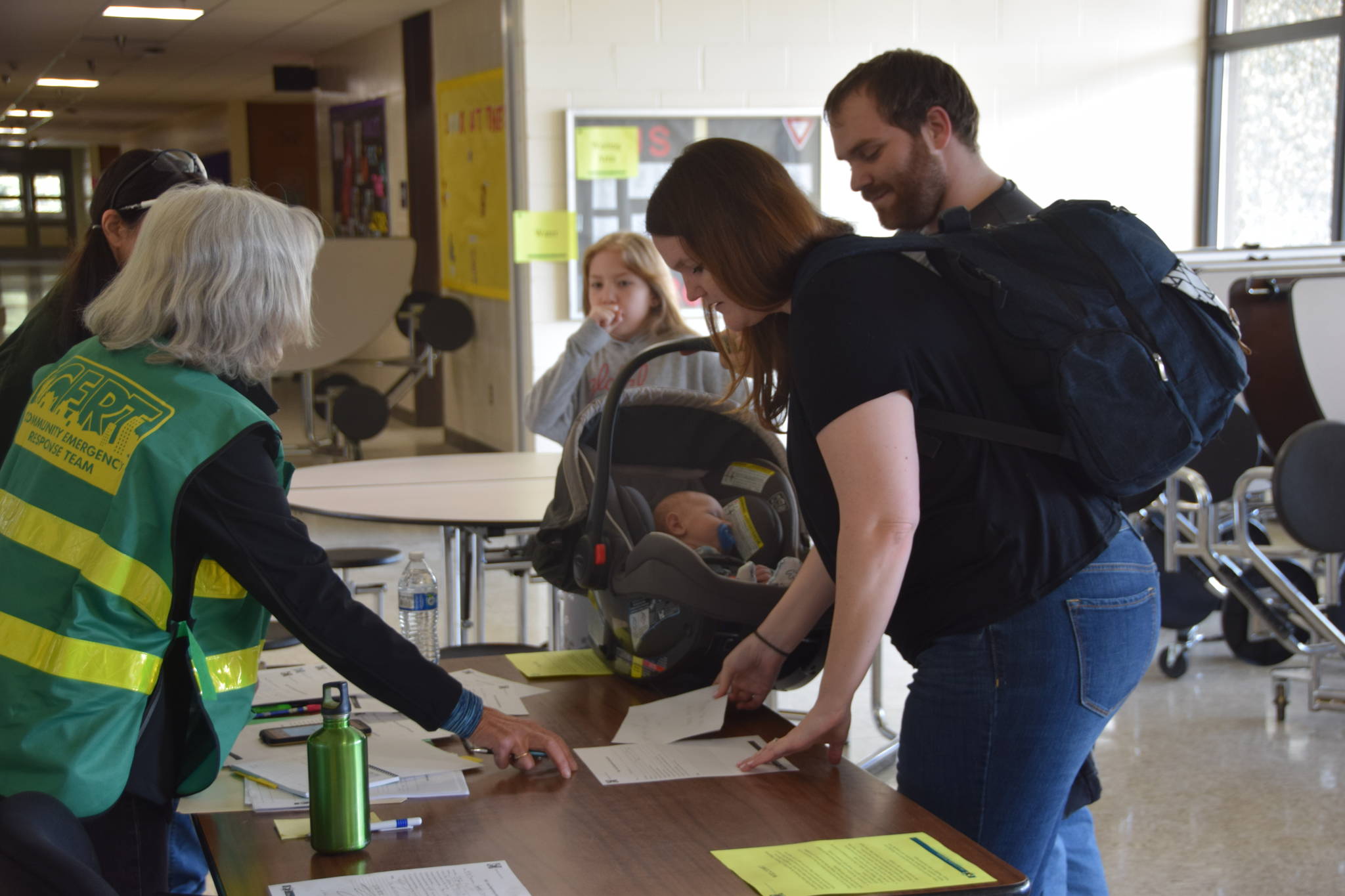The Borough’s Office of Emergency Management teamed up with volunteers from the community this past week for several large-scale disaster drills, including simulating the evacuation of a neighborhood and practicing treatment scenarios for disaster victims. These events were part of Alaska Shield 2019, which is a series of exercises implemented statewide every three years to test the effectiveness of local agencies’ emergency response strategies under realistic conditions and time frames.
The beginning of the week was spent evaluating 911 response time for emergency services and reviewing coordinated plans with other borough agencies and culminated in a disaster response scenario where OEM and volunteers with the Community Emergency Response Team (CERT) practiced evacuating a Kenai neighborhood for a “no-notice” event.
Dan Nelson, emergency manager for OEM and incident commander for Shield week, said during the emergency operations planning on Friday that a no-notice event is any type of disaster — an earthquake or wildfire, for example — that requires an immediate response and usually strikes with little or no warning. OEM Community Planner Bud Sexton added that while the exercise itself was for a no-notice event, the neighborhood residents were given plenty of early notice that CERT volunteers would be going door to door on Saturday and that participation was entirely voluntary.
Saturday morning starting at about 10 a.m., the CERT volunteers split into teams of two and went door to door handing out information on a 12-week plan for building a home emergency kit as well as letting families know what the procedures would be in the event a real evacuation was required. The volunteers coordinated with a team inside OEM’s Mobile Command Center to keep track of what houses had been hit by the volunteers and communicate about any issues that came up during the evacuation. Sexton said that some of the neighborhood residents were asked by OEM to play certain roles that forced the CERT volunteers to adapt to unexpected responses. Some people expressed skepticism about the imminent danger posed by the disaster, or were hesitant because they had pets or needed additional assistance due to a disability.
In addition to the simulated evacuation efforts, OEM set up a Disaster Help Center on Saturday at Kenai Middle School. Nelson said that this was the first time OEM was testing out this practice, which combines the resources of a mass care center and emergency shelter in one centralized location. The disaster help center is meant to provide clothes, food, shelter, medical services and access to other local agencies for the people that are evacuated from a given area after a disaster. Nelson noted that often in emergency situations families may not want to stay in a shelter and sleep on cots for a night or two, but they still need supplies like water bottles and blankets that are provided at said shelters. The disaster help center was staffed with OEM employees and CERT volunteers who signed people in and responded to their individual needs.
Community residents also volunteered to act as evacuees with specific roles that the CERT volunteers were unaware of ahead of time. One family brought in a baby that had been “abandoned” and had a daughter with a severe dog allergy, one man pretended to have a heart attack while being treated, and one woman acted very disoriented and kept asking CERT volunteers “Where am I? How did I get here?”
The CERT volunteers are trained to handle a variety of issues associated with disaster response, but their skills were put to the test thanks to the acting skills of the other volunteers. One CERT volunteer who worked as an EMT explained a technique he had come up with for determining if someone is simply disoriented or if their mental acuity had faded due to dementia or Alzheimer’s.
“Just tell some jokes,” he said. “If someone is just disoriented, their brain can still process jokes and they’ll usually respond. If their mind is gone, the jokes usually don’t land.”
One of the younger volunteers went all out in committing to the role of having lost her mother, and she spent two hours crying and screaming as volunteers scrambled to help her.
Nelson said that Shield Week gives OEM an opportunity to see their full-scale response team in action, which would otherwise only happen in the event of actual emergencies. Nelson will be evaluating the results of this year’s Shield Week over the next month. After that, he will coordinate with the other participating agencies around the state to address any shortfalls in resources and how each agency can most effectively address emergencies when they arise.

